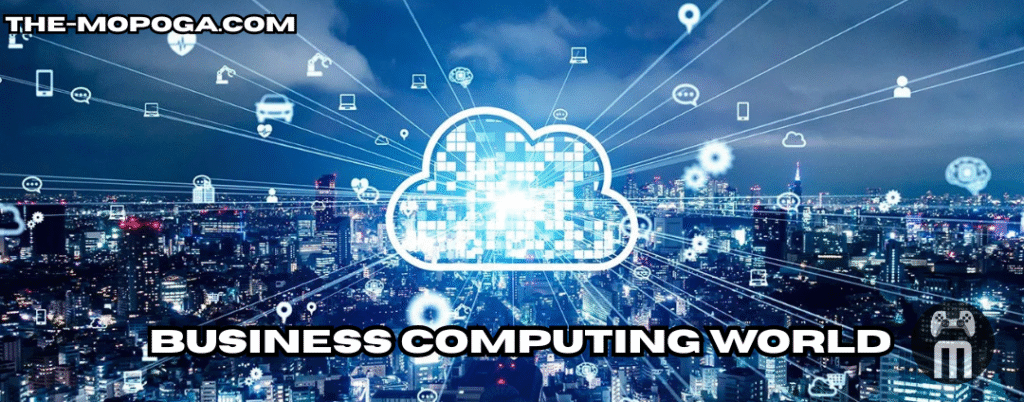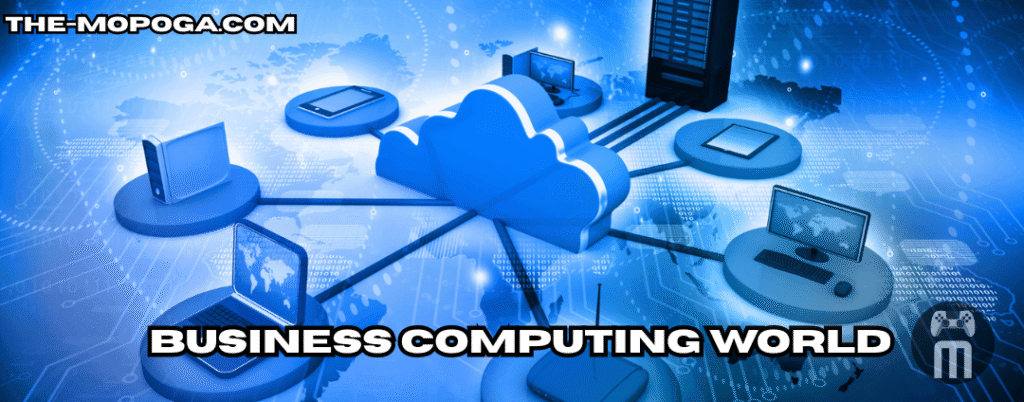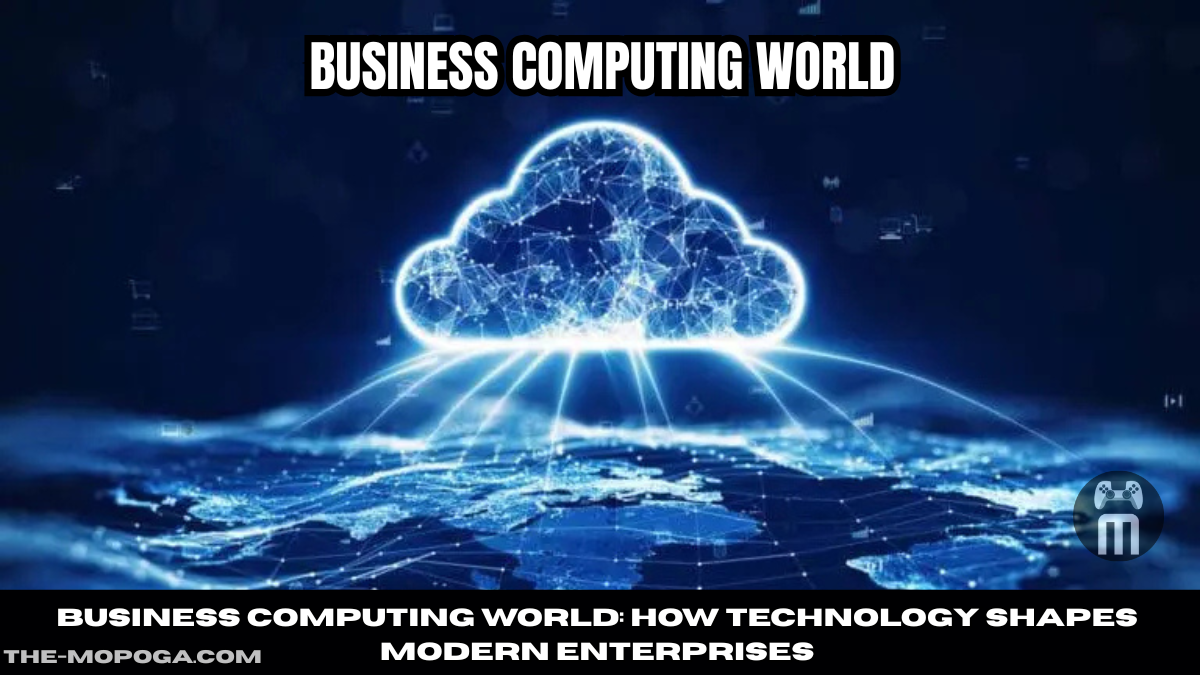The phrase “business computing world” captures the fast-moving intersection of corporate strategy, information technology, and digital innovation. From the earliest mainframes of the 1960s to today’s AI-driven cloud platforms, computing has transformed how organizations operate, compete, and grow. This post explores key trends, real-world applications, and expert insights to help readers understand—and thrive in—the global business computing landscape.
1. A Brief History of Business Computing World
Business Computing World began as a way to automate back-office accounting. In the 1950s and 60s, mainframes from IBM and UNIVAC performed payroll and inventory tasks once done by hand. By the 1980s, personal computers brought computing power to individual employees, enabling spreadsheet modeling, word processing, and early database management.
The 1990s introduced client-server networks and the commercial internet, allowing companies to share data across offices and continents. Today, cloud infrastructure, artificial intelligence, and mobile devices extend that revolution, offering virtually unlimited processing power and data accessibility.
2. Core Components of the Modern Business Computing World

Hardware Infrastructure
Servers, storage arrays, and high-speed networks remain the backbone of enterprise IT. Edge devices—from IoT sensors to mobile handsets—feed critical data into these systems.
Software Ecosystems
Enterprise Business Computing World Planning (ERP) suites, Customer Relationship Management (CRM) platforms, and advanced analytics tools streamline operations and decision-making. Open-source frameworks allow customization, while Software-as-a-Service (SaaS) reduces upfront costs.
Cloud Business Computing World
Public, private, and hybrid clouds provide elastic computing resources on demand. Major providers like Amazon Web Services (AWS), Microsoft Azure, and Google Cloud Platform dominate, but niche players offer industry-specific solutions.
3. Key Trends Reshaping Business Computing World
- Artificial Intelligence & Machine Learning – AI powers predictive analytics, chatbots, and process automation.
- Cybersecurity Emphasis – With cyberattacks rising, enterprises invest heavily in zero-trust architectures and real-time threat detection.
- Remote & Hybrid Work – Secure VPNs, collaboration suites, and virtual desktops support distributed teams.
- Sustainability & Green IT – Energy-efficient data centers and carbon-aware software help reduce environmental impact.
- Quantum Computing Prospects – Still experimental, quantum processing promises breakthroughs in complex modeling and encryption.
4. Real-World Applications
- Retail: Predictive analytics optimize inventory and personalize marketing.
- Finance: High-frequency trading and fraud detection rely on lightning-fast computing.
- Healthcare: Electronic health records and AI diagnostic tools improve patient outcomes.
- Manufacturing: IoT sensors monitor machinery, reducing downtime and maintenance costs.
5. Benefits for Organizations

Implementing modern Business Computing World solutions yields measurable gains:
- Efficiency – Automation reduces manual work and errors.
- Scalability – Cloud services grow with the company, avoiding expensive hardware upgrades.
- Data-Driven Decisions – Advanced analytics convert raw data into actionable insight.
- Competitive Advantage – Early adoption of emerging tech can differentiate a brand.
6. Challenges and Considerations
Despite its advantages, the business computing world presents hurdles:
- Security Risks – Breaches can be costly and reputation-damaging.
- Integration Complexities – Legacy systems often resist seamless upgrades.
- Cost Management – Pay-as-you-go cloud models require vigilant budgeting.
- Skill Gaps – Recruiting and retaining skilled IT professionals remains difficult.
7. Strategies for Staying Ahead
- Continuous Learning: Encourage staff to pursue certifications in cloud, cybersecurity, and data science.
- Strong Governance: Implement clear policies for data handling, access control, and compliance.
- Vendor Diversification: Avoid lock-in by balancing multiple cloud and software providers.
- Regular Audits: Security and performance audits help identify vulnerabilities early.
8. Future Outlook
Over the next decade, expect tighter integration of AI, expanded use of edge computing, and more robust privacy regulations. Businesses that combine technological agility with ethical data practices will lead the next wave of digital transformation.
Frequently Asked Questions
1. What does “Business Computing World” mean?
It refers to the use of computer systems, networks, and software to manage and optimize an organization’s operations, from finance to customer service.
2. How is cloud Business Computing World changing business?
Cloud computing lets companies rent computing resources on demand, reducing hardware costs and enabling rapid scaling.
3. Which industries benefit most from advanced Business Computing World ?
All sectors gain advantages, but finance, healthcare, manufacturing, and e-commerce see particularly high returns due to their data-intensive processes.
4. What skills are vital for a career in business Business Computing World ?
Key skills include cloud architecture, cybersecurity, programming, data analytics, and project management.
5. How can small businesses compete in the business computing world?
By adopting cost-effective SaaS tools, leveraging managed IT services, and focusing on cybersecurity best practices, even small firms can access enterprise-grade computing power.
Final Thoughts
The business computing world is vast and constantly evolving. Companies that embrace innovation while safeguarding data and budgets can turn technology into a lasting competitive edge. Whether you are a start-up founder, an IT manager, or simply curious about the digital economy, understanding this landscape is essential for success in the modern marketplace.





